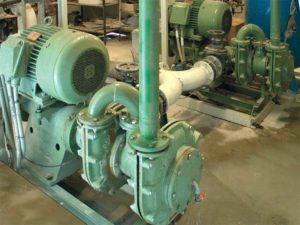 If you have issues with your sludge or slurry pump, there are obvious signs. The pump might begin to shake, or you may keep on losing seals and bearings. No matter what vibration issues you have, there are many problems that could arise. Vibration issues can lead to expensive repairs and production downtime. It’s a good idea for you to be able to solve any slurry pump issues yourself.
If you have issues with your sludge or slurry pump, there are obvious signs. The pump might begin to shake, or you may keep on losing seals and bearings. No matter what vibration issues you have, there are many problems that could arise. Vibration issues can lead to expensive repairs and production downtime. It’s a good idea for you to be able to solve any slurry pump issues yourself.
Confirming a Vibration Problem
There are acceptable limits for sludge and slurry pumps when it comes to the level of acceptable vibration. However, you might not be able to tell if you are within these limits. You can choose to have a vibration technician to come out and use a vibration analyzer to look for any problems.
If you did not find the issue here, you would want to look at how your pump runs. In some cases, it might work differently at your facility than when you purchased it. For example, your slurry pump might need to have a higher design head.
This can cause premature failure of the wet portion. It can also cause the pump to vibrate too much. You can put a pressure gauge to look at how well it is functioning. Then take a pressure reading.
You should also take a flow reading. If you don’t have one, you can use a portable reader to estimate it. You can compare your findings with the manual to determine how well your pump is performing.
What to Do Next
If you suspect an issue, you should look at the frame to see if you have cracked welds or loose bolts. Either of these issues can cause your sludge pump to move around too much. If you do not fix it, the bearings may eventually fail.
To check the bearings, you can use a listening device to determine if there is irregular noise. If there is an issue, you will most likely hear popping sounds. If you do not know what sound you are hearing, you should compare it with other equipment that you know is functioning well.
You can also look for sheave misalignment. The sheaves should operate at the right speed for the job you are doing. The keys need to be at least 180 degrees of separation. Otherwise, they can create an imbalance for your slurry pump. You can look at the wet end to look for any blocked impellers. In addition, if the impeller is loose, then there may be vibration.
Contact Premier Fluid Systems for More Information
If you are having issues with your sludge and slurry pumps, do not hesitate to contact Premier Fluid Systems. We will be happy to help you however we can. Give us a call today for more information.
